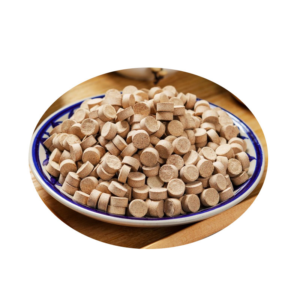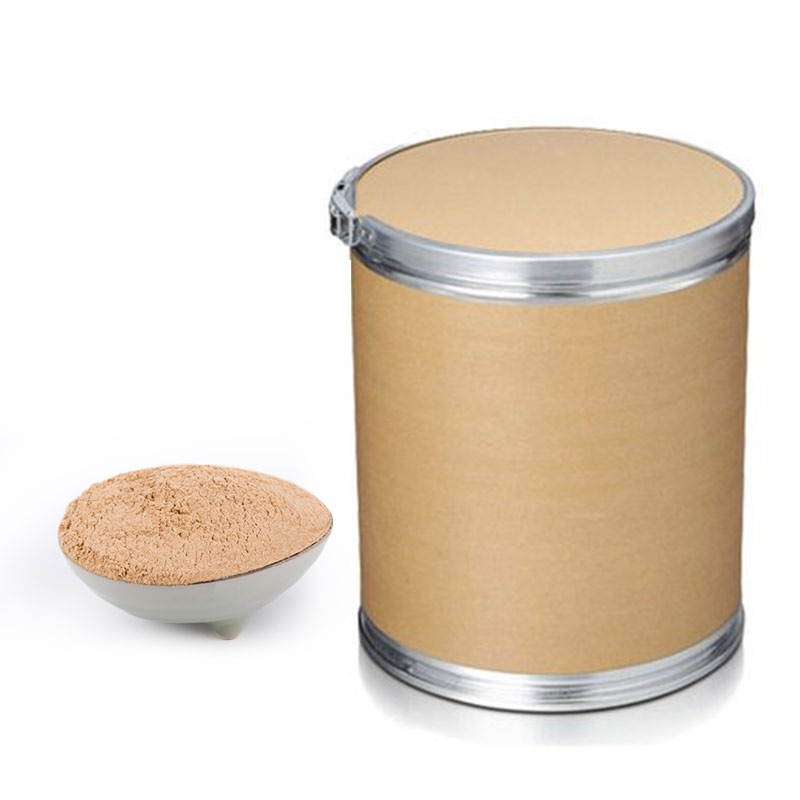Notoginseng folium P.E
-Plant extracts
Product information

| Product Name | Notoginseng folium P.E |
| CAS | 80418-29-7 |
| Melting point | 242-244 °C |
| Boiling point | 498.63°C (rough estimate) |
| Density | 1.0760 (rough estimate) |
| Storage conditions | Sealed in dry,Store in freezer, under -20°C |
| Solubility | Stabilize |
| Morphological | Powder |
| Acidity coefficient (pKa) | 14.13±0.70(Predicted) |
| Color | Brown |
| Purity | 98% |
| Shelf life | 2 years |
Intro
Baisfu Notoginseng folium P.E is an extract of Panax notoginseng root of Acanthaceae. It mainly contains saponin components. It has the effect of dispersing stasis, reducing swelling and relieving pain. This product is use for hemoptysis, hematemesis, epistaxis, hematochezia, dissolving leakage, traumatic hemorrhage, thorax and abdominal tingling and collapse injury.
[Habitat distribution] Wild under the hillside jungle, today mostly cultivated on the slope of the foot of the mountain, on the gentle slope of the mound or under the artificial shady shed at an altitude of 800 ~ 1000m. It is distribute in Jiangxi, Hubei, Guangdong, Guangxi, Sichuan, Yunnan and other places. Wild is rare, mostly cultivated.
[Appearance and morphology] It is a perennial herb, 30 ~ 60cm high, short rhizome, straight in the first 2 ~ 3 years, oblique in the later, the taproot is stout and fleshy, the lateral root is conical or cylindrical, often with warty protrusive branches, 2 ~ 4cm long, about 1cm in diameter, and longitudinal stripes when dry.
Functional indications of Notoginseng folium P.E
Dissipate stasis to stop bleeding, reduce swelling and pain. It is use for hemoptysis, hematemesis, epistaxis, hematochezia, hemorrhage, trauma bleeding, thorax and abdomen tingling, fall and flapping injury. 3 to 9g. Swallow after grinding, 1 ~ 3g at a time.
Chemical composition
It contains many active components of dammarane type tetracyclic triterpene saponins. Ginsenosides -Rb1, -Rd, -Re, -Rgl, -Rg2, -Rhl, 20-O-glucose ginsenosides Rf, notoginseng saponins -R1, -R2, -R3, -R4, -R6, -R7, and stranded cyanoside XVII were separated from the root. -Rb2, -Rd, -Re, -Rg1 and notoginseng saponin R1 were separated from the massive rhizomes. Rb1, Rg1, Rh1, Dama-20 (22) -ene-3β, 12β, 25-triol-6-O-B-D-glucopyranoside, etc., were divided from the root of the pilose. From Radix Ceratophylla: ginsenosides Rb1, Rd, Re, Rg1, Rg2, Rh1, notoginseng saponins R1, R2, R4.


